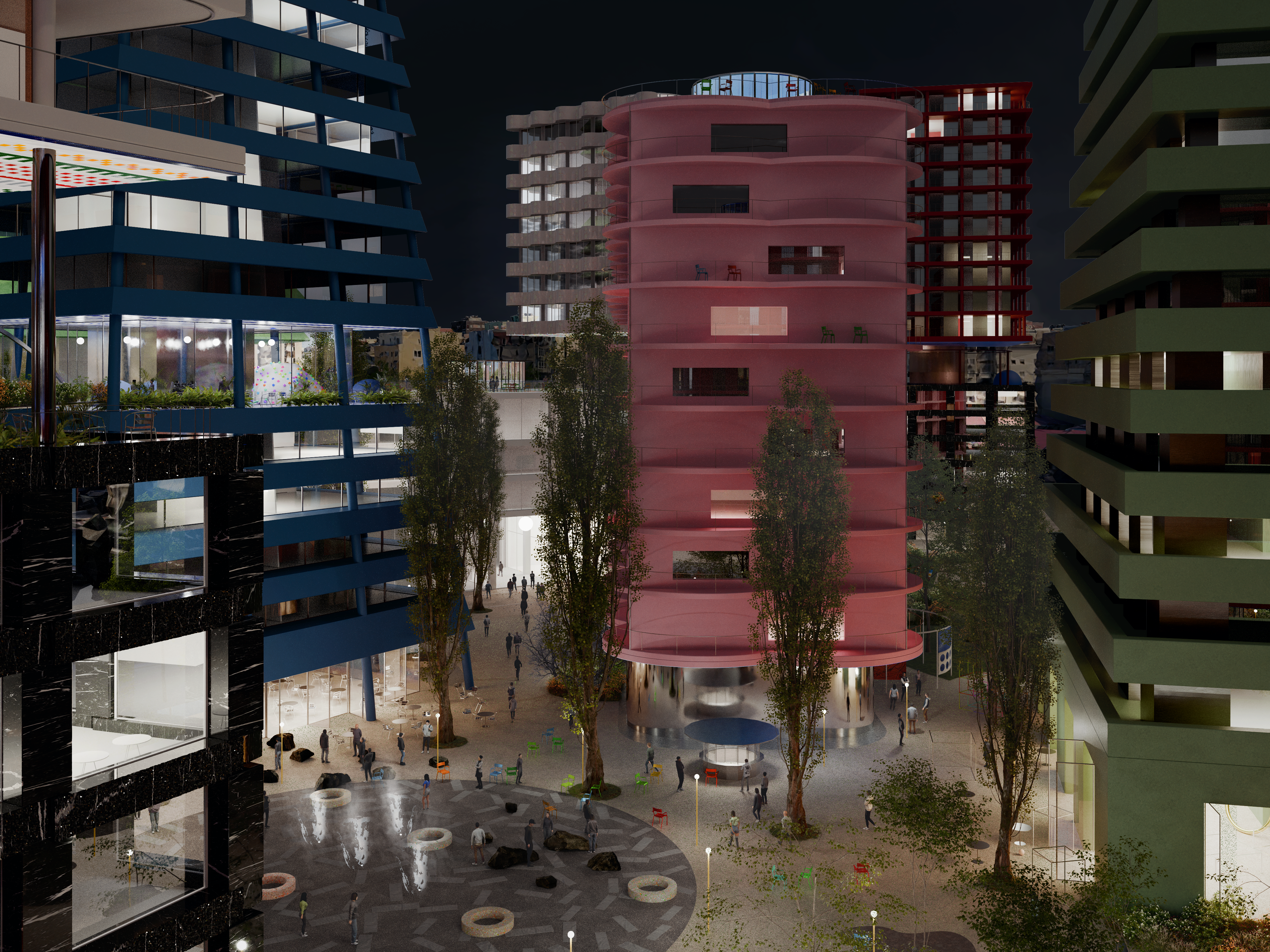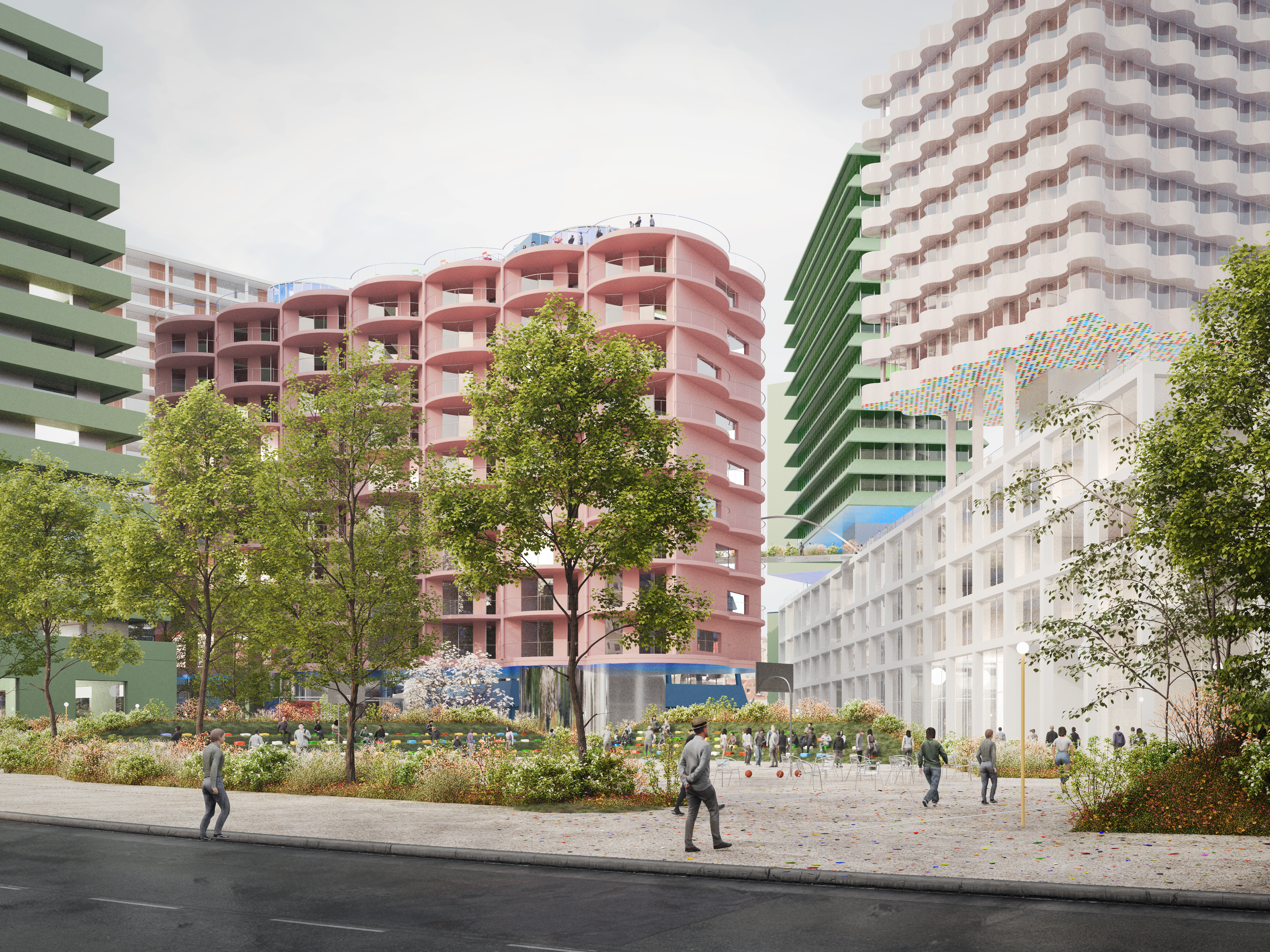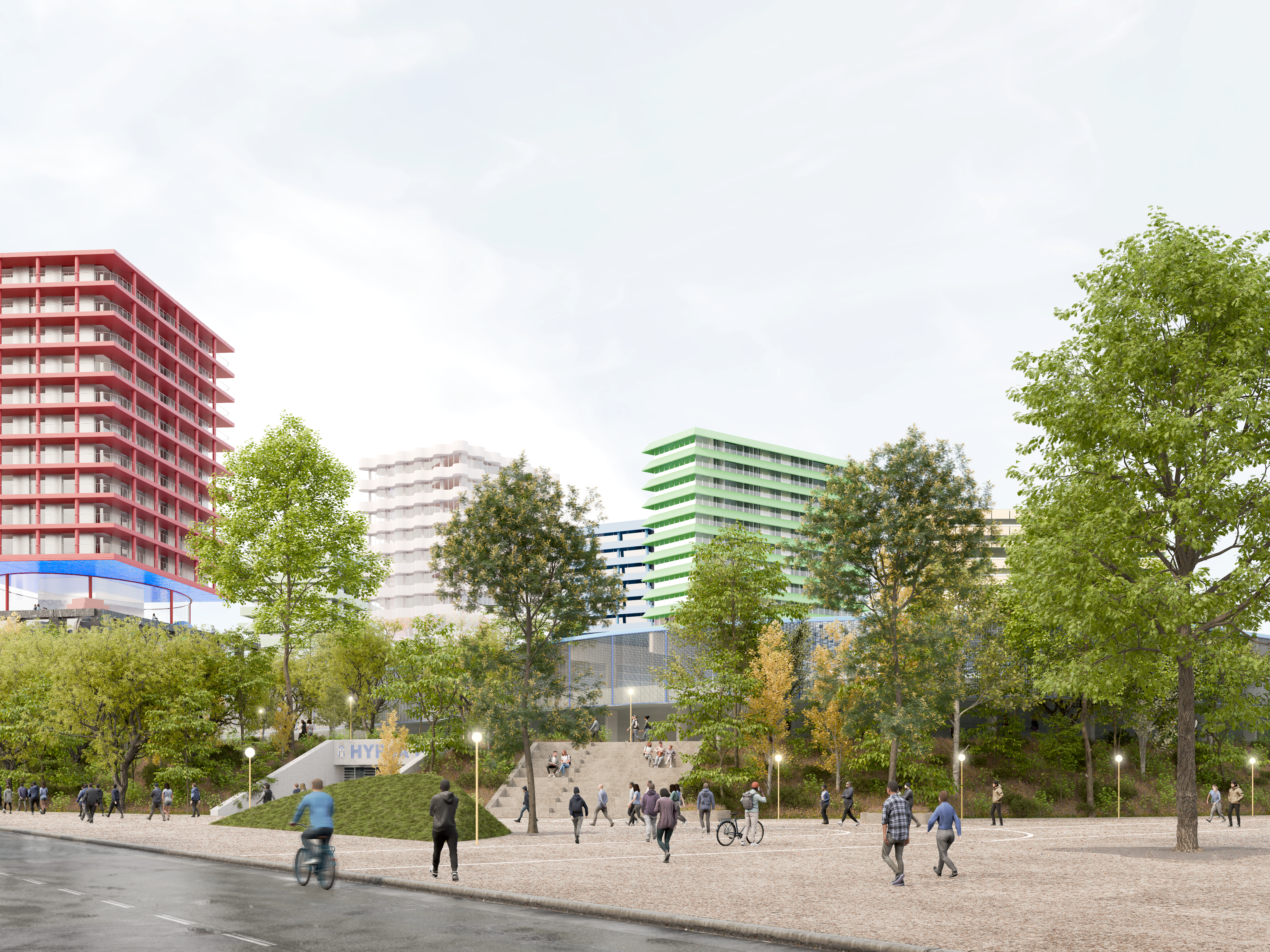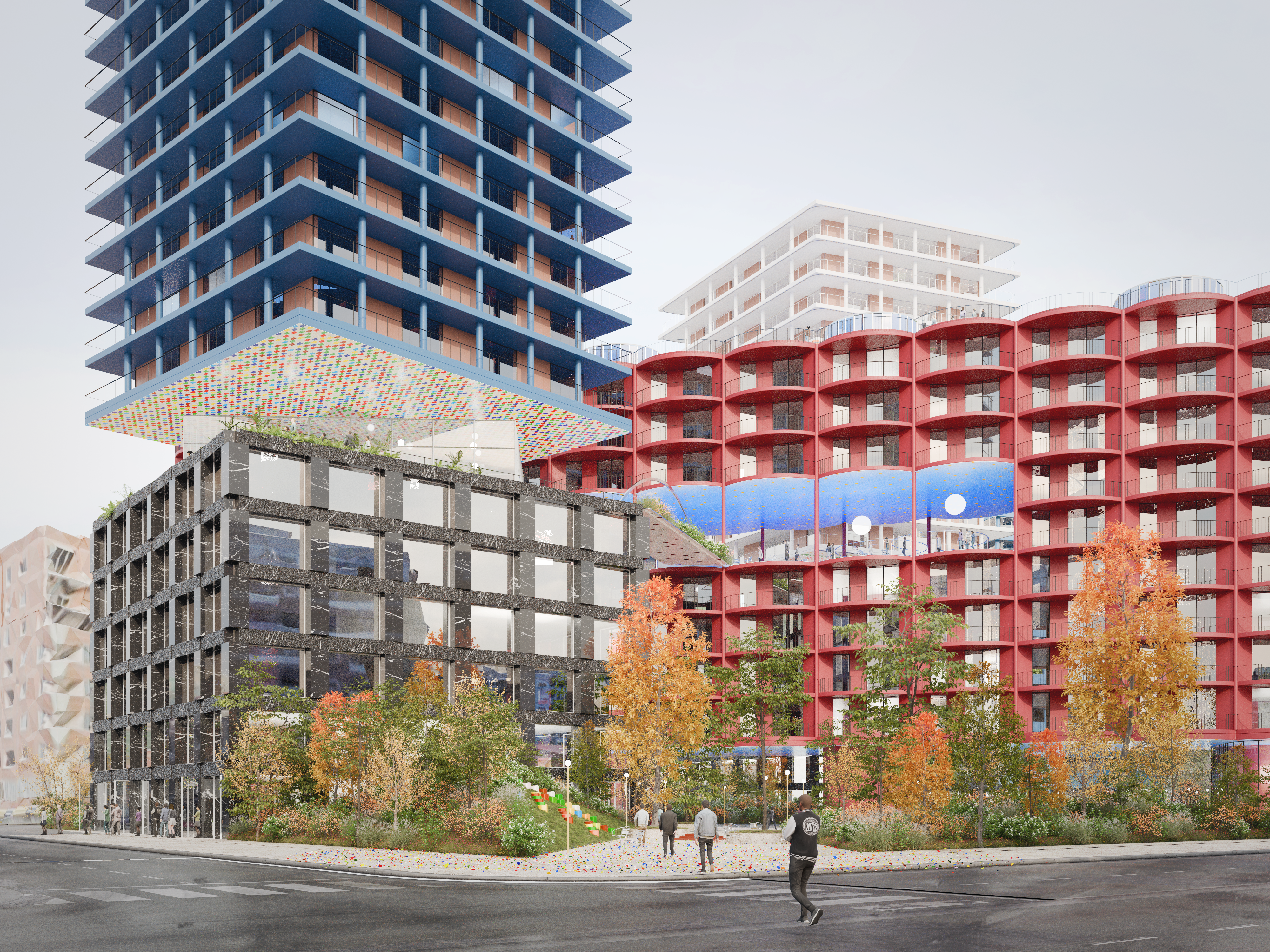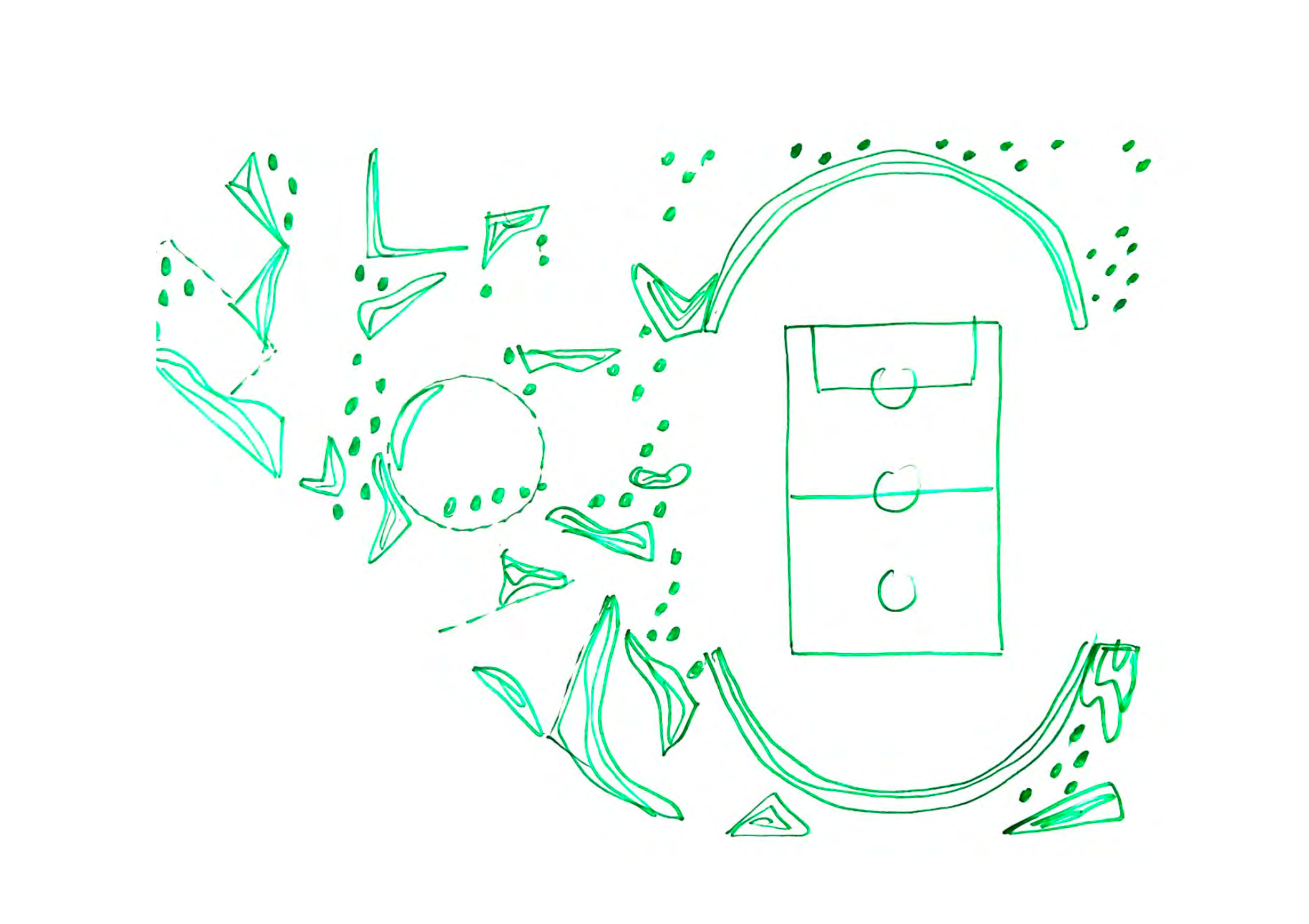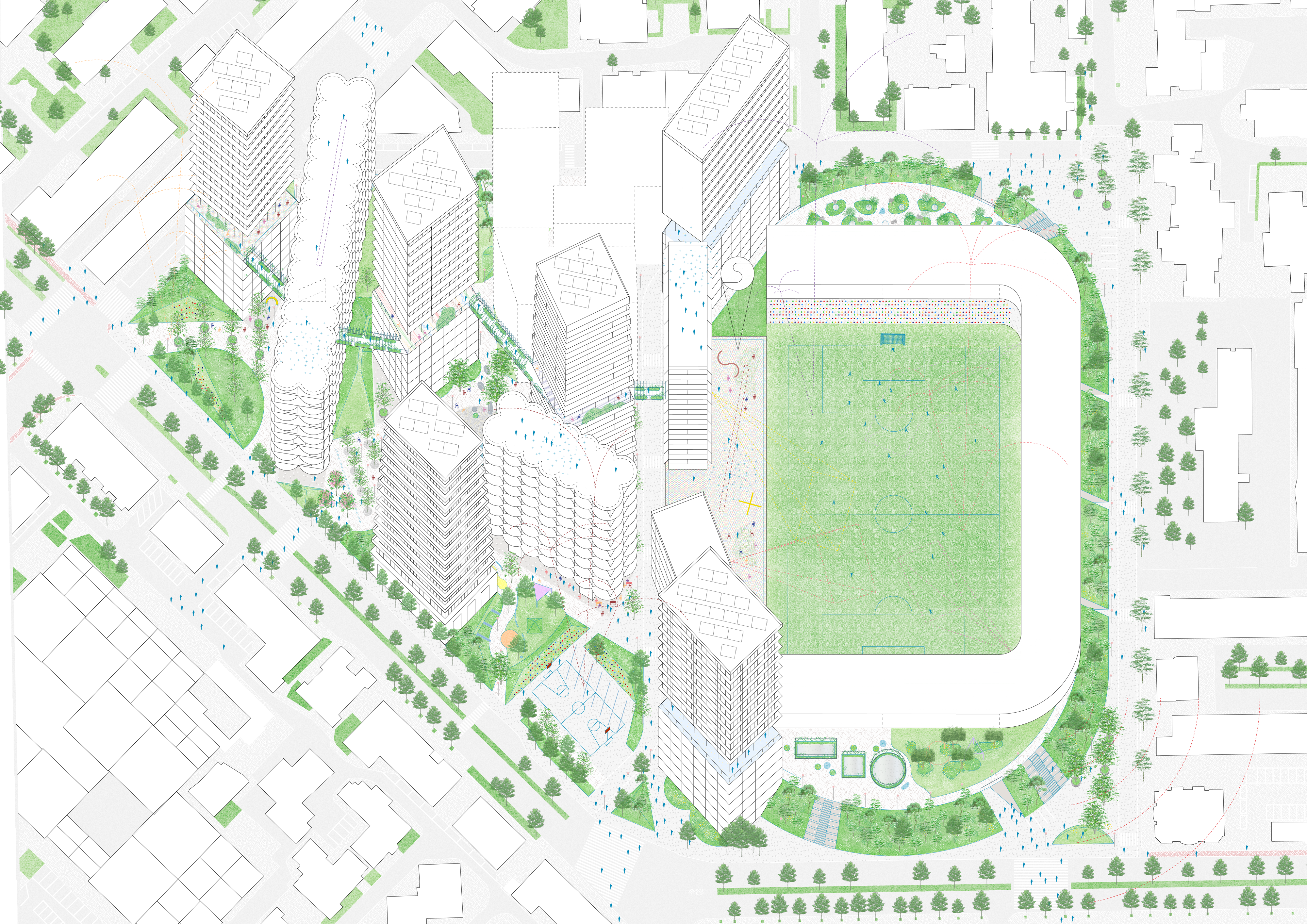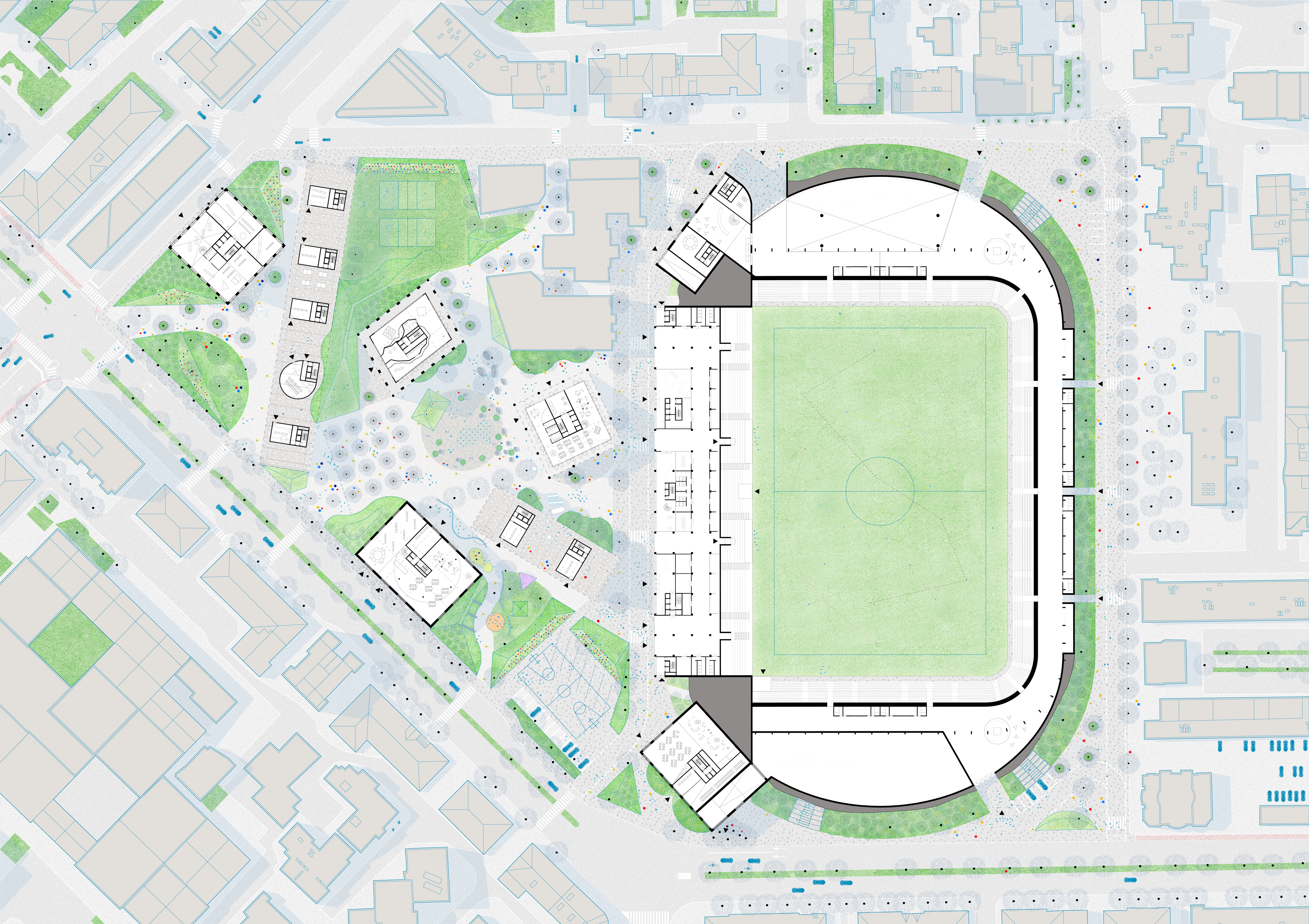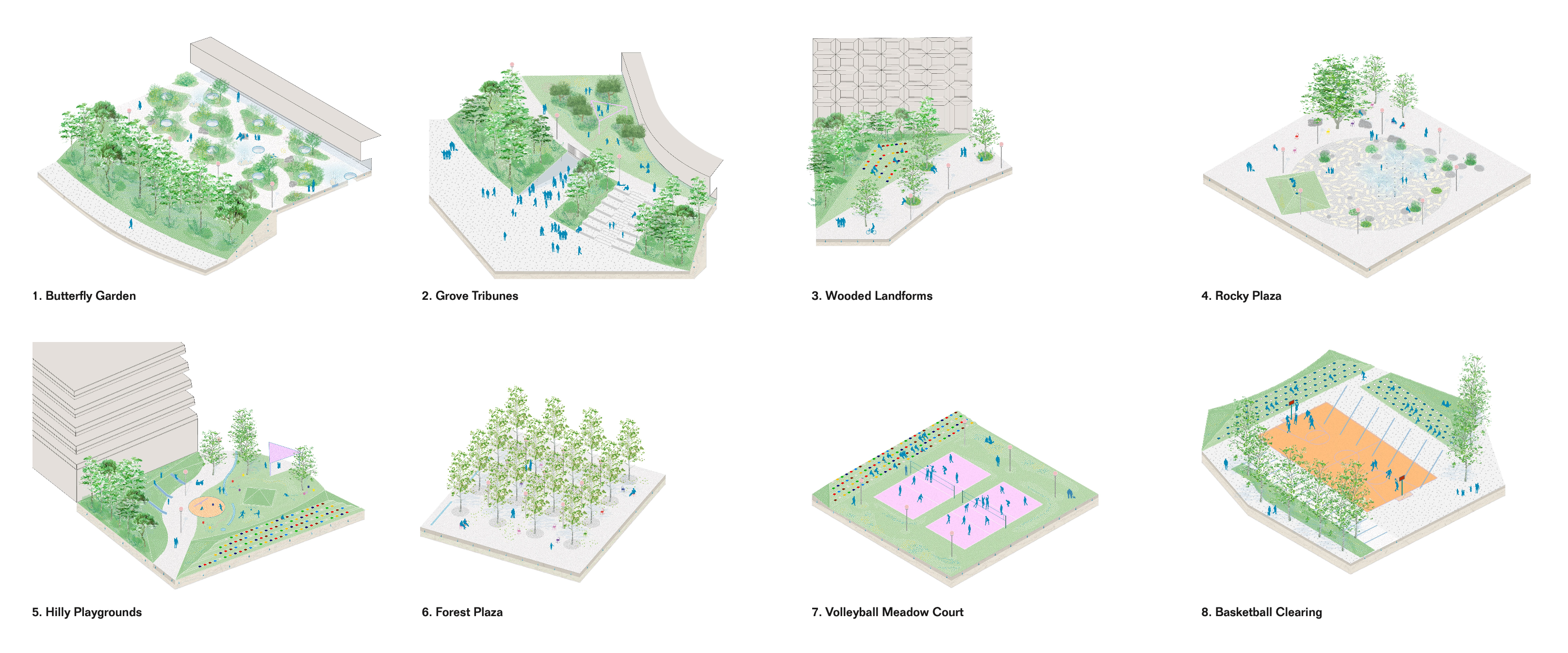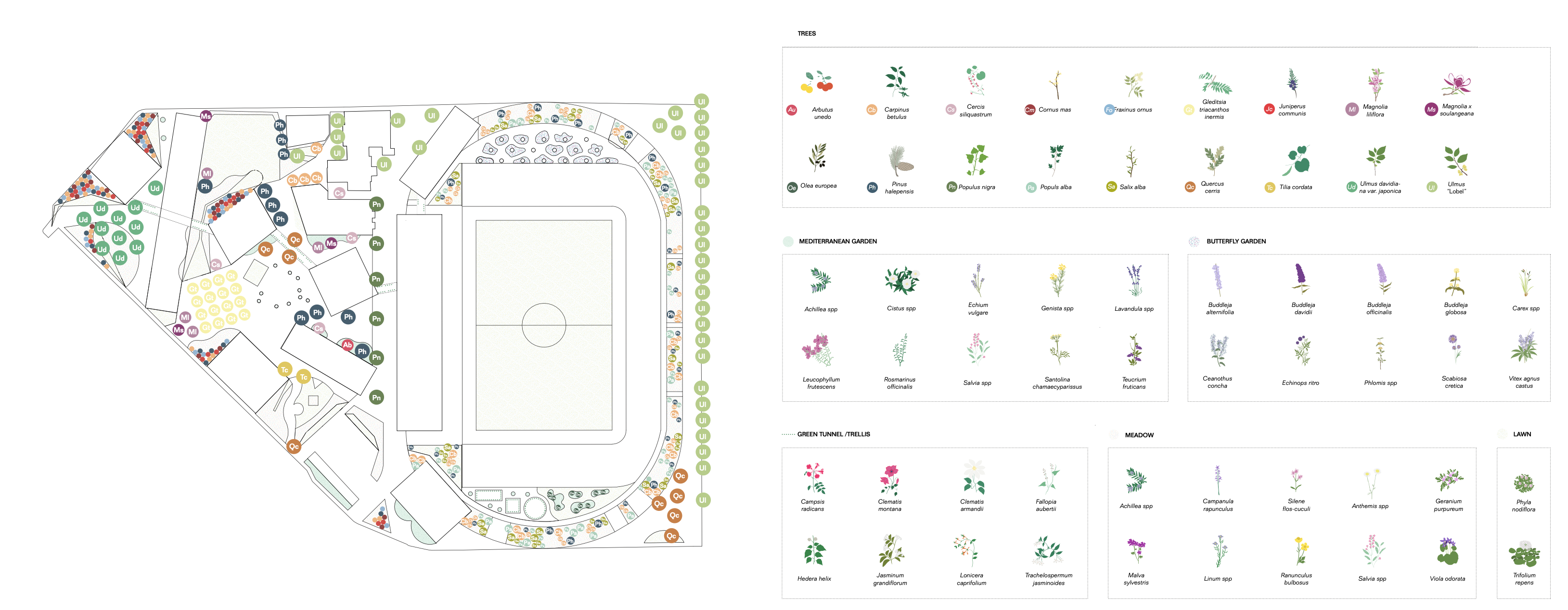status:
International Concept Design Competition, Second Prize
year:
2025
place:
Tirana, Albania
client:
Albania National Territorial Planning Agency, Municipality of Tirana
with:
OFFICE Kersten Geers David Van Severen, baukuh, L’AUC, Arquitectura-G, Matilde Cassani, Ne Arkitektët, Bollinger & Grohmann, ALES
description:
The Selman Stërmasi Stadium Park project aims to enhance the site’s natural and urban conditions by creating a seamless connection between the stadium and its surrounding landscape. Originally built in 1956 on former agricultural land, the stadium is now surrounded by green landforms and a network of gardens designed to integrate sports, recreation, and ecological sustainability. The project seeks to extend the experience of the stadium beyond its physical boundaries, blurring the distinction between indoor and outdoor spaces while fostering a sense of playfulness and community engagement. A key design strategy is the reuse of excavated soil from construction to shape the geometric landforms, reducing environmental impact and construction costs.
The park is structured around a series of microclimatic landscape sequences, which include wooded landforms, butterfly gardens, rocky plazas, and hilly playgrounds. These areas not only serve as ecological habitats but also offer diverse recreational and social spaces, ranging from shaded seating areas to interactive play zones. A strong emphasis is placed on biodiversity, with a mix of native and adapted plant species enhancing the site’s ecological resilience. Approximately 60% of the park’s surface will remain permeable to support sustainable stormwater management, helping to regulate temperatures and improve urban air quality.
The lighting strategy carefully balances functionality with ecological preservation, using soft and directional lighting to minimize disruption to nocturnal biodiversity. Additionally, the park will introduce 489 new trees while maintaining 83 existing ones, creating an urban forest that supports climate adaptation and community well-being. By integrating sports courts, gathering spaces, and natural elements, the project transforms the stadium into a dynamic, multifunctional public space that enriches the surrounding urban environment.
